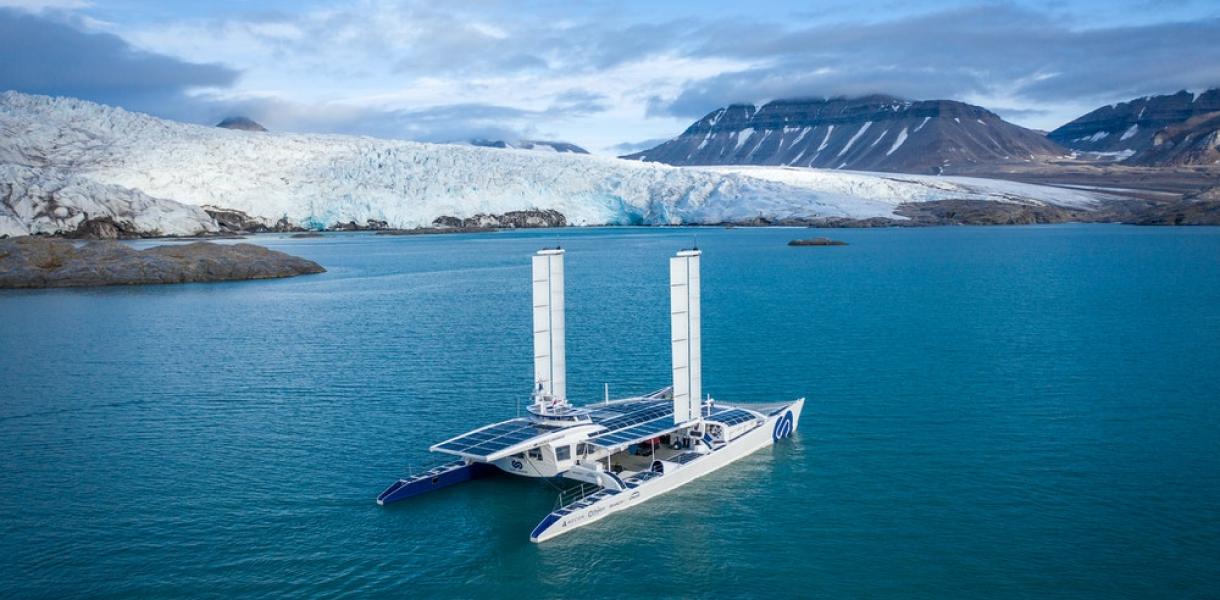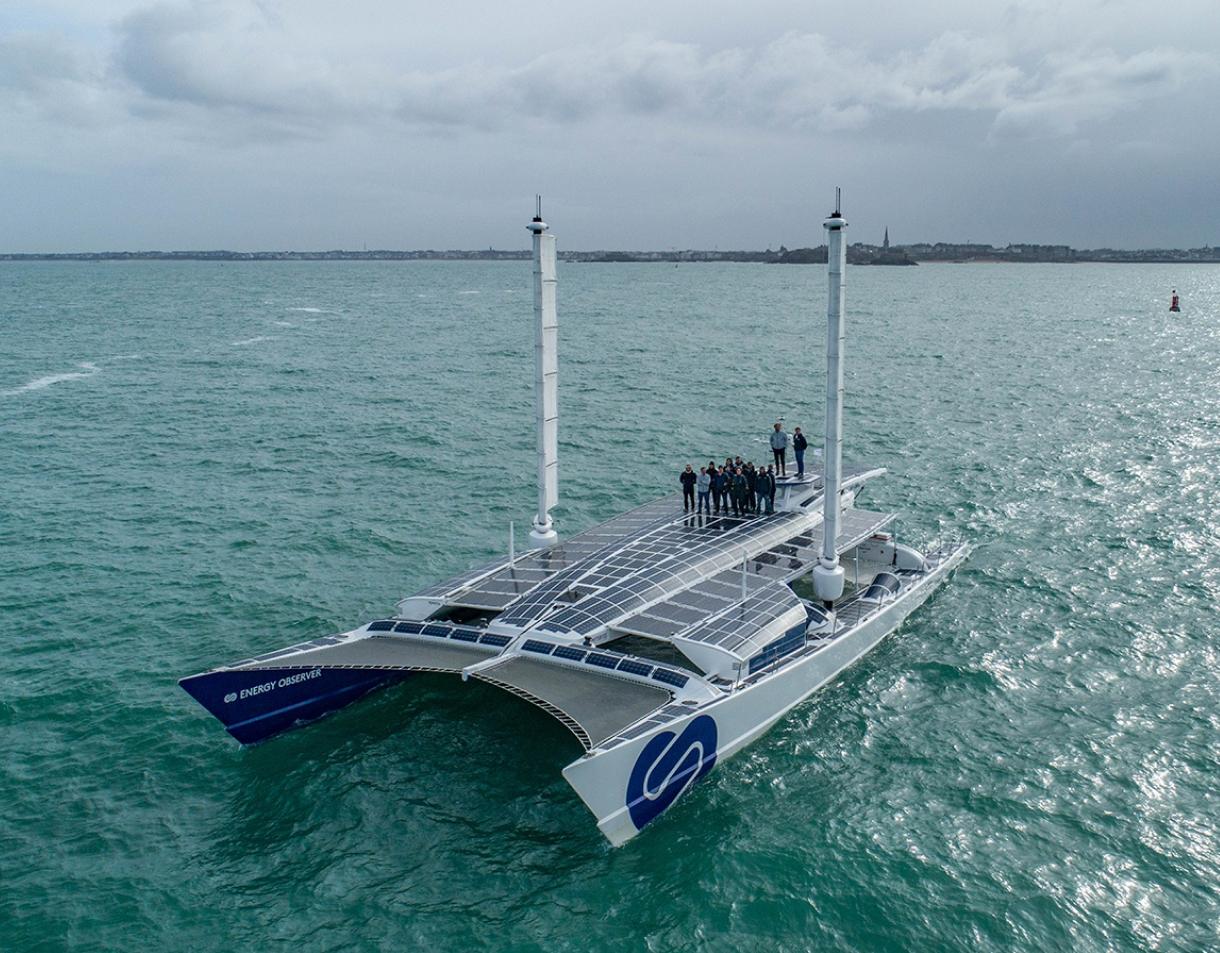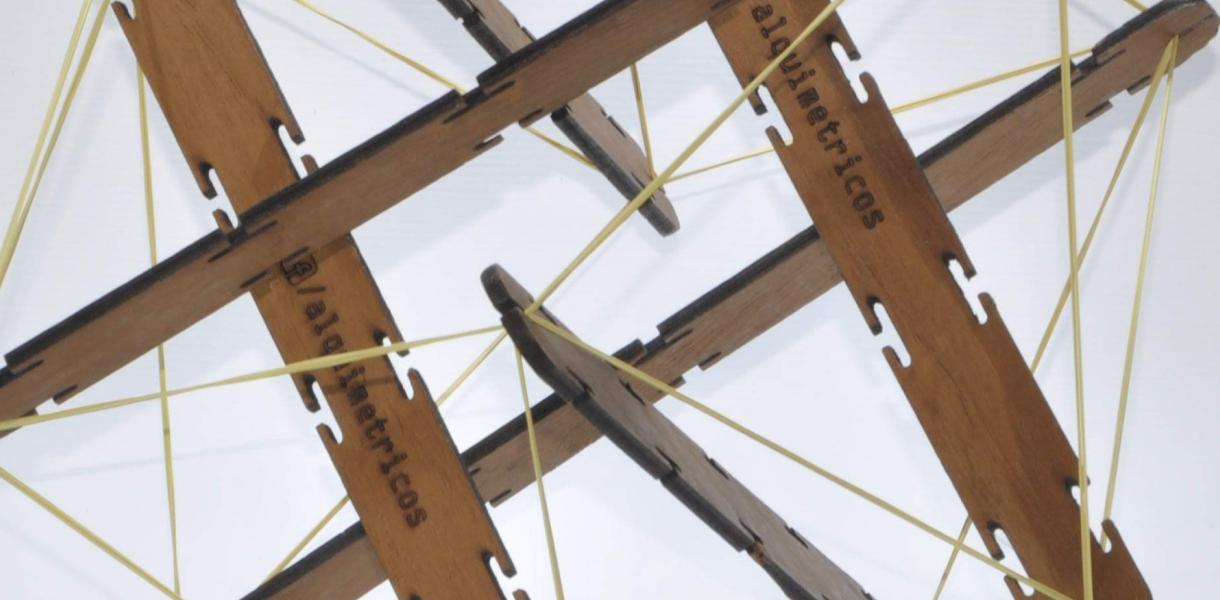What’s the design in a nutshell?
The Energy Observer is a globally first touring vessel to test, learn and optimise multi-energy solutions.
Why is it needed?
The demand for energy is growing while the Earth’s raw materials such as oil, coal and natural gas supplies are running out. We desperately need to make a departure from these non-renewables but, right now, they still supply about 84% of the world’s energy.
While many countries are thriving on wind, solar and hydropower, others remain in the tight grasp of fossil fuels. And even with the best efforts to transition the globe entirely to clean energy, it still might not be enough to cap our emissions. We simply need to find better alternatives.
How does it work?
The Energy Observer is an expedition vessel testing and proving the efficiency of a full production chain that relies on the coupling of different renewable energies: hydrogen, solar, wind and water power. The converted multi-hull race boat is equipped with all the latest technologies, including a testing lab, solar panels, wind turbines, a hydrogen fuel cell system, and a controlled system comprising over 1,500 sensors and hundreds of alarms.
The most significant feature of the vessel is its ability to generate hydrogen energy. This is generated through a set of processes starting with the desalination of the seawater. The purified water is then used both for drinking and for the process of electrolysis, which splits the water molecule into hydrogen and oxygen. The electrolyser can produce 360 grams of hydrogen per hour and around three and a half kilograms of hydrogen are needed to power the boat for an hour.
"Energy Observer is emblematic of what will be the energy networks of tomorrow."
How does it improve life?
The Energy Observer has become a movement pushing the limits of zero-emission technologies, where every stopover is an opportunity to learn, understand and share the different energies. The solution is a great example of what energy networks may look like in the near future, with its mix of renewable energies and hydrogen storage system, according to Florence Lambert, the director of the CEA Liten research institute which devised the boat's energy system.
“Energy Observer is emblematic of what will be the energy networks of tomorrow, with solutions that could even be used within five years,” says Lambert. “For example, the houses of tomorrow could incorporate a system of hydrogen storage, which is produced during the summer months and then used in the winter.”
What’s the impact to date or projected impact?
The vessel launched in 2017 from a shipyard in Saint-Malo, France, is now on a world tour for six years and will make 101 stops across 50 countries. The purpose is to test and optimise these technologies, as well as get out and meet those who are coming up with sustainable solutions to make clean energies accessible to all.
In 2020, after its passaged across France, the Mediterranean and northern Europe, the Energy Observer team continued with its final refit in Saint-Malo prior to embarking on the next four years circumnavigating the globe. It’s the first time these energy technologies, developed on an industrial scale, will be tested in such harsh conditions.






